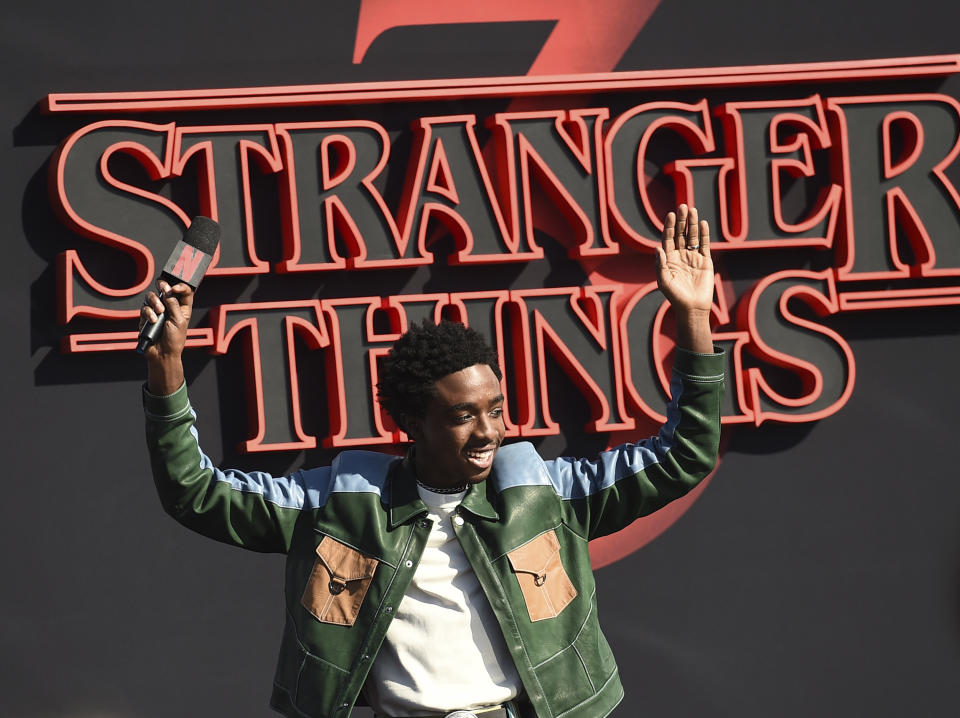Can we trust Netflix's viewership numbers?
Every so often, typically around earnings time, Netflix (NFLX) chooses to announce viewership numbers for some of its original shows or movies—when the numbers are impressive.
Last week, in Netflix’s third-quarter earnings report (the company missed on revenue and domestic subscriber adds, but beat on earnings per share and international subscriptions; shares popped), it disclosed viewership numbers for six originals: three shows and three films.
Netflix said 64 million households watched Season 3 of “Stranger Things” in its first month, the most-watched season of the series to date, and said 32 million households watched “Unbelievable” (a new miniseries based on an award-winning 2015 investigative story, “An Unbelievable Story of Rape”) in its first month. It also said Season 3 of “La Casa de Papel” (“Money Heist”) was its most-watched series in non-English language territories, with 44 million households watching in the first month.
As for original films, Netflix said 41 million households watched “Tall Girl,” 40 million households watched “Secret Obsession,” and 29 million households watched “Otherhood,” in the first month of each release.
Out of context, those numbers look impressive.
The problem is that all of the numbers Netflix chooses to share are without context. No outside firm can properly verify them, and you can’t reasonably compare the movie numbers to box office ticket sales.
As The Wrap writes, it “causes intrigue and skepticism whenever they decide to actually put out a numerical figure on anything.”
Furthermore, Netflix counts it as a “view” when a subscriber watches 70% of something. For a movie, that’s fair, since you’re unlikely to make it 70% through a movie and not finish. But for a TV series, that is some serious fudging, since a lot of people try the first episode of a new series, then stop watching; should those people count as viewers of the show?
And then there’s the Nielsen discrepancy.
Nielsen began reporting data for streaming services in 2017. This past summer, Nielsen said that 26.4 million people watched Season 3 of “Stranger Things” over the July 4 holiday weekend, from July 4 to July 7. Netflix came out and said that the number was 40.7 million people—nearly double what Nielsen said.
The issue is that Nielsen does not yet count viewership on tablets, mobile phones, or laptops; and it is only counting the U.S.
We know, from a range of studies and surveys, that younger generations watch tons of content on mobile; but is there such a large number of people watching an entire show on their phone that it can explain Netflix’s number being nearly double Nielsen’s? Or is it possible, and plausible, that nearly half of the viewership of Season 3 of “Stranger Things” in the first weekend came from outside the U.S.?
“I think you have to take the company at face value,” says Rosenblatt Securities analyst Bernie McTernan, “but I also don’t think you can compare the new-world numbers to the old-world numbers. So, 73 million households watched ‘Murder Mystery?’ But you cant say what would that be in domestic box office sales. It’s apples and oranges. you cant compare it.”
McTernan also points out that Netflix’s numbers aren’t very useful anyway, since they can’t tell us how many viewers chose to subscribe to Netflix to watch those shows.

Nielsen has acknowledged that its way of measuring Netflix is not yet perfect. And there has been criticism of Nielsen’s method for years across the TV industry: for live television, Nielsen still uses “average audience” based on the 44,000 Nielsen homes in the U.S. To measure Netflix views, Nielsen is using “audio recognition” in Nielsen homes, which sounds imperfect. (Just this week, Nielsen began measuring Amazon Prime Video.)
But Nielsen will likely get better at measuring streaming services, and eventually could become the industry norm for analysts to use when measuring audience for OTT shows. (Sony Pictures Television, for example, is already using Nielsen’s streaming data to help guide its OTT decisions.)
The true viewership numbers could lie somewhere between Nielsen’s imperfect numbers and Netflix’s eye-popping claims. Or you could just take Netflix at its word. Netflix and Nielsen did not respond to requests for comment for this story.
The first time Netflix ever voluntarily shared viewership numbers was at the end of last year, when it declared 45 million global accounts watched its horror movie “Bird Box” in the first week. It was a remarkable number: nearly one-third of all 158 million global Netflix subscribers. Many found the number hard to believe, but no one can do much but take the company at its word. Similarly, Netflix says the Adam Sandler and Jennifer Aniston comedy “Murder Mystery,” which has a 39% audience score on Rotten Tomatoes, was watched by 31 million households in its first three days.
Even if those numbers are inflated, it is a testament to the power of Netflix’s home screen, which industry execs have called the most valuable advertising real estate in all digital media—and only Netflix can use it, since it doesn’t sell ads there.
—
Daniel Roberts is a senior writer and show host at Yahoo Finance and closely covers streaming tech. Follow him on Twitter at @readDanwrite.
Read more:
Apple TV+ finally gets its price: $4.99 per month
Apple TV subscription plan gets skeptical treatment from analysts
When will American TV viewers hit peak streaming?
Disney says streaming is now its ‘number one priority’
Apple’s video strategy ‘will remain uninspiring’ says KeyBanc

 Yahoo Finance
Yahoo Finance 
